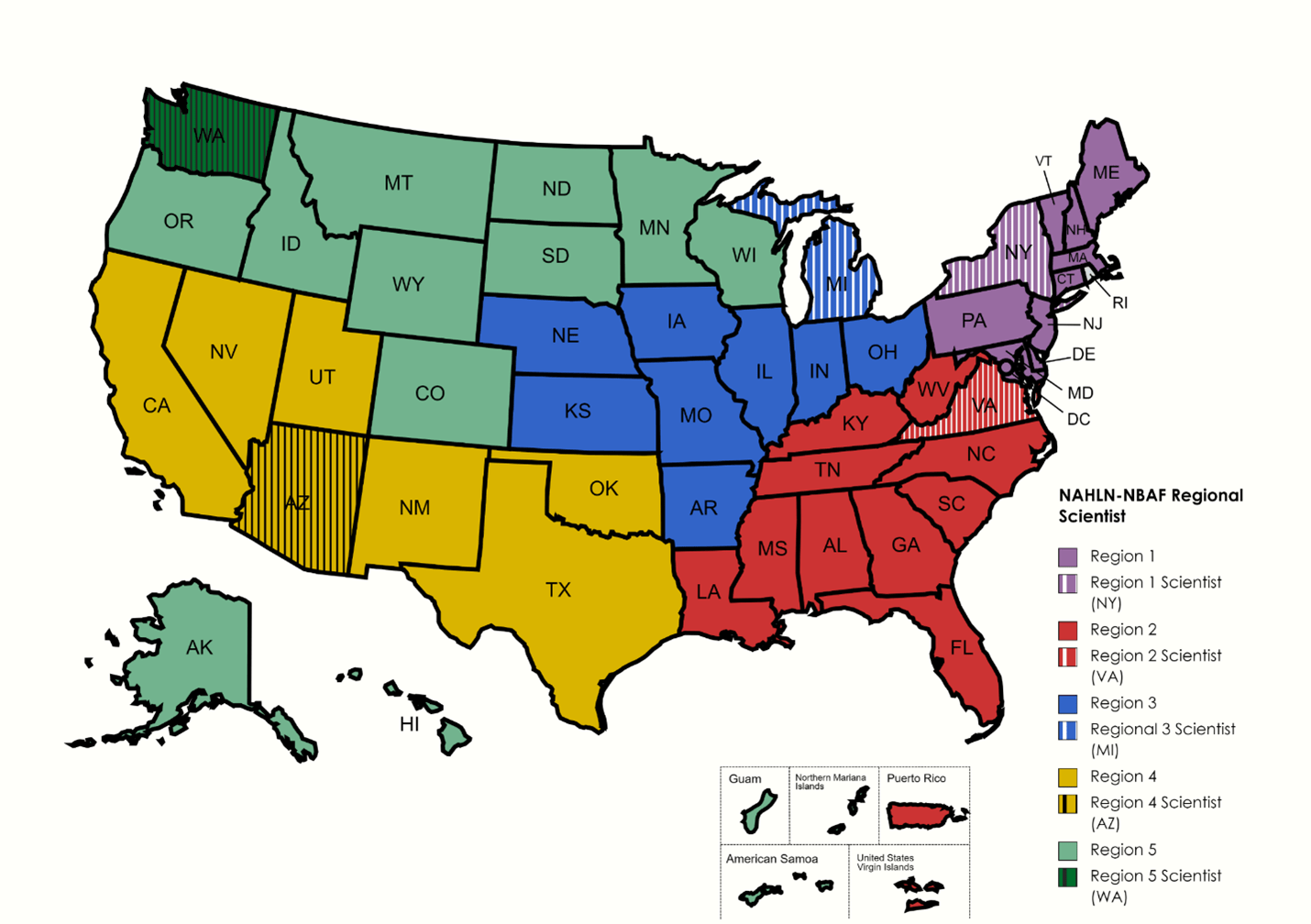NAHLN-NBAF Partnership
A review team comprising experts from APHIS, the National Bio and Agro-Defense Facility (NBAF), and NAHLN identified five key NAHLN facilities across the country to each host a scientist to work on this collaborative project.
These scientists are to specialize in evaluating and developing diagnostics for animal and zoonotic diseases. They are tasked with collaborating across the organizations and responsible for evaluating local, regional, national, and international threats and ensuring the NAHLN laboratories have the tools necessary to diagnose emerging threats.
Learn more about NAHLN
Learn more about NBAF
Host Laboratories

About the Partnership
The NBAF Partnership Funds Program provided funding for these laboratories as part of an overall strategy to help prevent animal pests and diseases from entering the United States and reduce the spread and impact of potential disease incursions through advance planning and preparedness.
The projected 4-year program will enhance the Nation’s veterinary diagnostic laboratory systems to respond to immediate, emerging animal health threats with improved diagnostics to sustain the U.S. agricultural well-being.
To improve detection of significant emerging and foreign animal diseases through four major objectives:
- The regional scientist, in coordination with NBAF and NAHLN leadership, will develop and implement regional risk assessment. The assessments will evaluate species priorities within the region, forecast emerging disease threats and produce matrices to assist with risk mitigation strategies.
- The regional scientist and host laboratories will utilize their subject matter expertise to evaluate current diagnostic assay capabilities and develop novel tests, systems, and procedures to recognize emerging animal disease threats earlier.
- With guidance from the NAHLN Program Office, the regional scientist will help develop response preparedness with gap and needs analysis, preparation of supply stockpiles to respond in emergencies, and participation in realistic evaluations through periodic exercises.
- Finally, the regional scientist will communicate and collaborate with other NAHLN members to ensure program products can be applied to the greatest extent possible.
- Ultimately, the partnership program will develop an emerging disease response plan based on regional risk assessments and engagement of stakeholders to communicate program priorities.
- The NAHLN Program Office will coordinate scientist activities and liaise with NBAF leadership to establish program priorities by species and disease.

